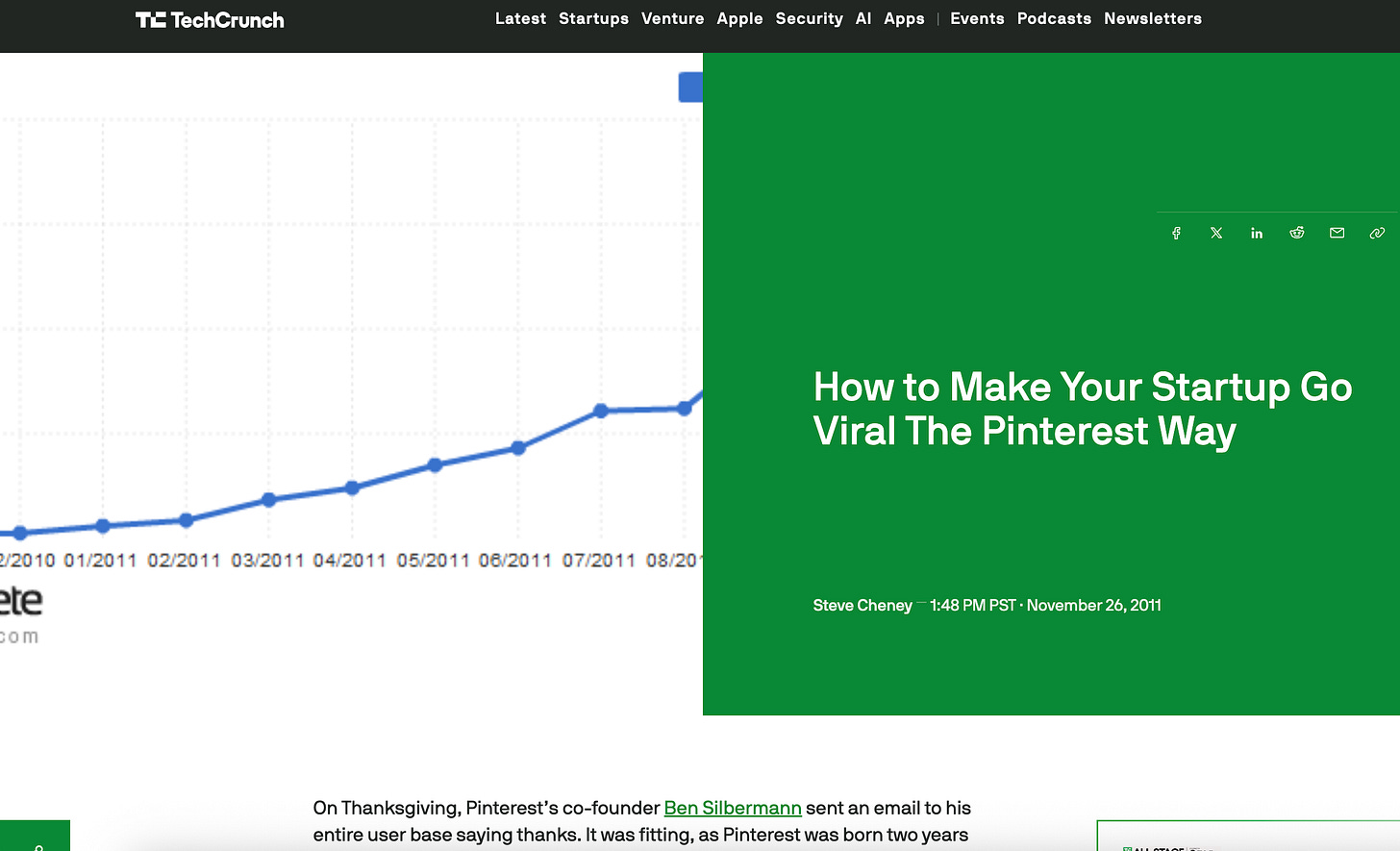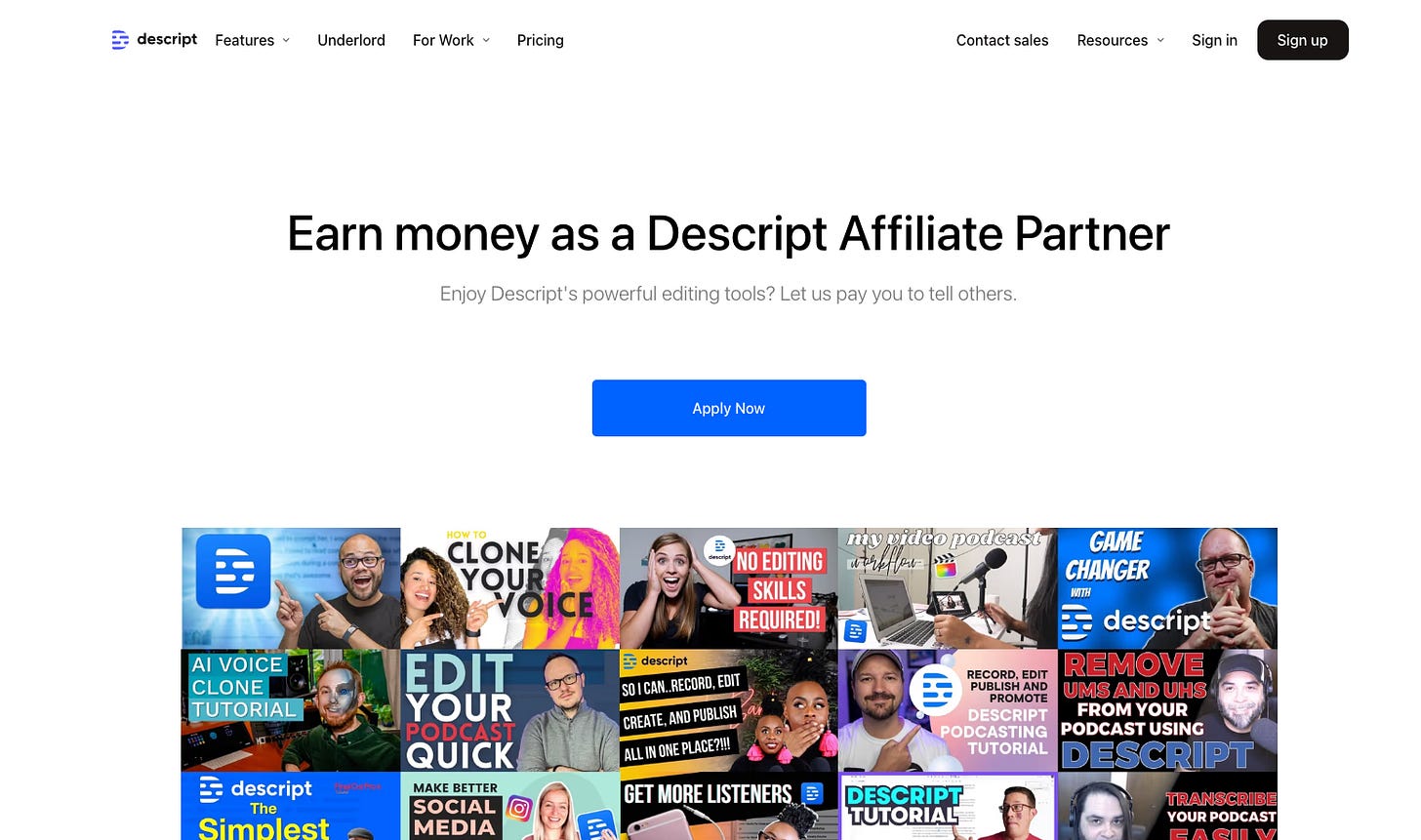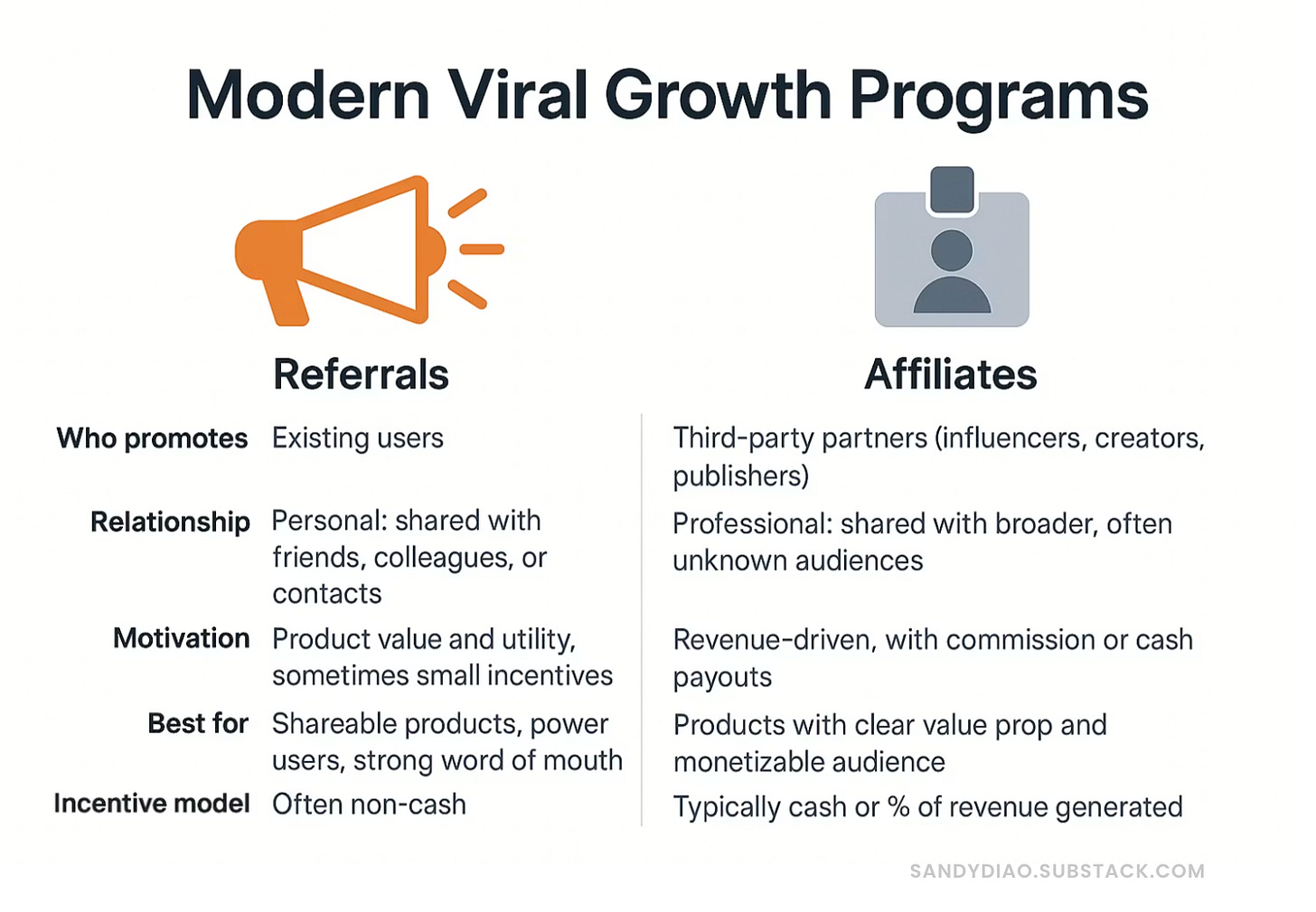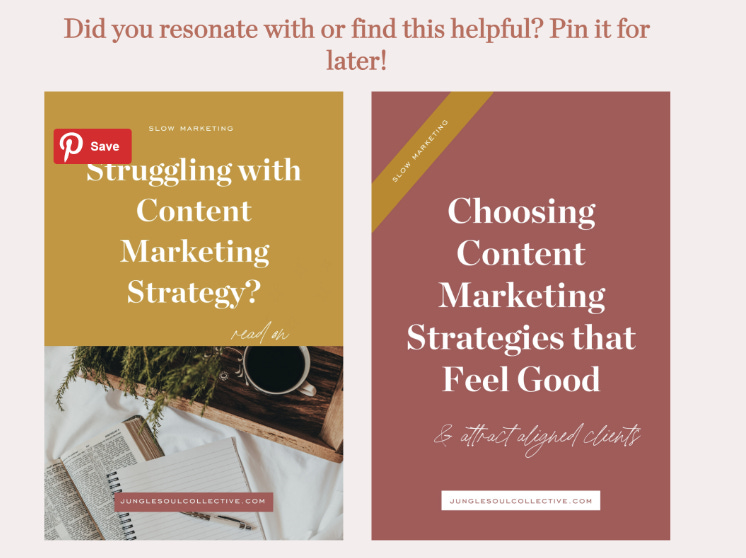How to engineer viral growth with referrals and affiliates
Trust is the new performance channel. This is how leading companies are engineering viral growth through structured referrals and affiliates.
Virality was never a strategy, it was faith.
We believed that if we built something good enough, people would talk about it, the press would pick it up, users would share it, and growth would just happen.
And for a while, it did.
I’ve seen this firsthand at Pinterest, Descript, and Indiegogo. Like many companies in the 2010s, we benefited from the classic forms of virality: social sharing, network effects, and PR.

The problem with these channels is that they’re unpredictable and impossible to replicate on demand. The PR hype eventually dies down, and network effects plateau. And when they do, you’re left with a growth channel you can’t control.
That’s the reality for most companies these days.
Earned media doesn’t work anymore. The market is saturated, with too many apps vying for people’s attention. Cultural "heists" like BeReal and Clubhouse drive explosive word of mouth, but struggle to retain users.
Traditional viral growth delivers traffic, not real traction. Attention might be there, but intent is not. Meanwhile, referrals and affiliate programs are quietly doing what virality never could: scale with engineer-like precision.
Why referrals and affiliates are thriving
Trust is the new viral growth engine.
Affiliates and influencers now impact up to 88% of purchase decisions, whether users discover the product through them or use them to validate a choice. Trust doesn’t just drive adoption, it also improves the quality of your leads. Customers acquired through referrals have 16% higher LTV, according to Wharton’s research.
The reason is simple, and very human: these programs rely on someone you personally trust telling you to do something. They’re like word of mouth, except that they’re structured and have very clear attribution.
That structure is what makes referrals and affiliates so powerful and allows us to treat them as a performance channel. You can track CAC, test incentives, and model payback, just like with paid ads. The economics are embedded in the system, meaning that you’re building ROI into the program itself through incentive design.
Except that, unlike ads, you’re not buying attention and low-intent users. Because these programs sit at the very end of AARRR, Referral, they don’t pull in low-intent traffic. They bring in people who look like your best users.
The engine behind modern word of mouth
To build these systems effectively, it’s important to understand the distinction between referrals and affiliates. They often get lumped together, but serve different roles in a modern growth engine.
Referrals are peer-to-peer. They come from people who already use your product and want to share it with their close connections. These programs shine in products with a natural shareable element or a strong base of power users. Think Notion, where teams bring in teammates, or Milanote that gives extra storage credits for each referred user.

Affiliates, on the other hand, are third-party partners. These can be creators, influencers, or other entities that earn cash or commission for driving revenue. They might be users of your product, but don’t have to - what matters most is alignment. Descript’s affiliate program, for instance, thrives because creators deeply understand the value of editing workflows, and can credibly promote it to their audiences. The same applies to Epidemic Sound, who only allows existing paid customers to join the program.

How top companies built viral growth programs
I’ve led viral growth programs across multiple companies, and the most successful ones all shared one trait: they are built with intent.
At Descript, we designed our affiliate program in a way that anyone could apply, but not everyone was accepted. We used PartnerStack to manage applications and linked referral payouts directly to revenue events.

Descript’s affiliate program was built with PartnerStack.
At Pinterest, the "Pin It" button acted as a referral engine. Creators embedded it on their sites to let audiences save images directly to Pinterest. It didn’t require cash incentives, the reward was baked into product utility: a way to organize and resurface content across platforms.
At Indiegogo, we helped project creators use perk systems to incentivize stretch goals. When I worked with Segway Robotics, we promised that if the campaign hit $1M, every backer would receive a bonus accessory. That turned customers into promoters, not just for their own benefit but for the whole community. Referrals became a collective mission.
How to design effective virality programs
It’s easy to launch a referral program. It’s much harder to make it work.
Here’s what to keep in mind when building referral and affiliate systems that actually convert.
Referral programs
1. Avoid generic incentives
The user needs an incentive to refer others, but the reward shouldn’t be generic, like cash. A better alternative is to tie it to the product value metric, which is often the one users are accessing in paid plans.
For example, Uber rewards users on a ride basis: when they refer someone, they get a discount on a future ride.
2. Consider double-sided incentives
Reward the user who made the referral but also the one who was referred. That way, you can use this incentive to immediately activate the new user.
Take Dropbox’s program: it leads the referred user to start experiencing the product’s value immediately.
3. Don’t build tracking systems too soon
Many teams commit to building a referral program, and then spend months or years building tracking into their system. I’ve seen this way too often and experienced it first-hand for the companies I work with.
This approach has the potential to be a waste of time and effort. Instead, use a low-cost, out-of-the-box tool, like Growsurf or Rewardful, before you build anything custom. That allows you to validate if affiliates work for your product at all (yes, there is a chance they won’t).
Affiliate programs
1. Find real users to promote the product
Affiliates might work with just anyone, but they work much better when the influencer is a real user of the product.
When recruiting your first affiliates, don’t cold pitch just everyone. Instead, recruit first from your own user base, then find people who can speak authentically about your product.
2. Map incentives to user economics
“How much should I offer the influencer?” This is a question I get often.
The answer lies in user economics, specifically in your LTV to CAC ratio. You want each customer to generate 3x more revenue than it cost to acquire and serve them.
For SaaS, that’s usually between 15% and 30% of the subscription fee. For B2B or high LTV customers, rewards can go higher. For high-volume, low-price consumer products with lower margins, the range might drop to 2–5%.
You can also vary the payout period depending on your expected retention. Some teams reward lifetime recurring commission, some have one-time rewards, and others cap it to one year of recurring commission.
3. Limit program abuse
There’s a common problem with affiliates: “passive income marketers”, people who bid on branded terms to get their share out of users who were already looking for your product anyway.
Two measures can prevent this: first, have screening questions to assess the quality of your affiliates, and once you accept them, make sure to spell out that this constitutes grounds for expulsion.
Test both programs
Referrals and affiliates are not an either/or decision. Depending on your product, you can (and often should) run both types of programs in parallel. Referrals and affiliates work best when targeted at different user types, and they can compound one another’s effects over time.
Virality you can count on
Referrals and affiliates challenge the old notion of virality as “hoping it works”.
They prove you can design virality like any other growth lever, with systems and predictable ROI.
Unlike traditional channels, these programs scale with your user base, not against it. The more value your product delivers, the more users want to share it. The better you align incentives, the more you can count on that sharing to drive results.
And here’s the best part: you can set this up early, whether you have 10 users or 10,000. Once it’s in place, it compounds quietly in the background.
If you're serious about growth, stop waiting for a miracle. Start engineering one. I help teams build referral and affiliate systems that work. Let’s talk.










Nice Sandy!